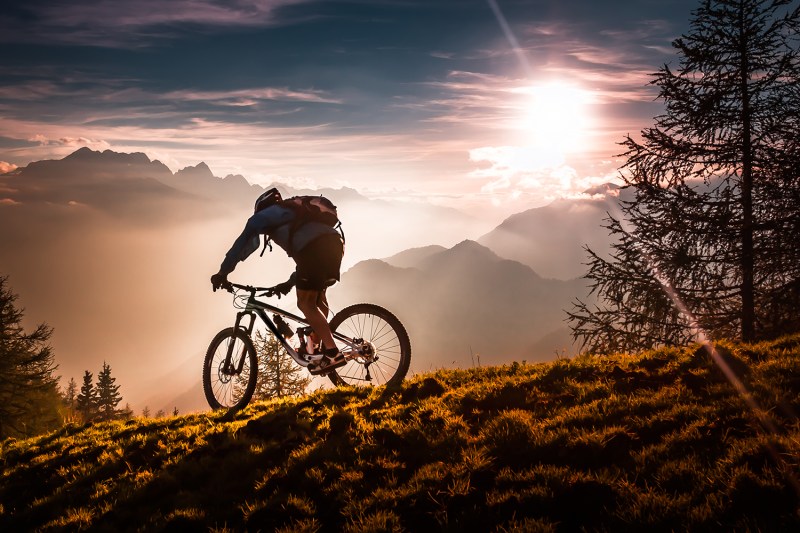
Venturing outdoors, enjoying nature, and being active have always been enjoyable things to do, especially now during the quarantine. As a matter of fact, riding a bike during the pandemic has been a common way for people to escape their houses, at least just for a little while. Perhaps you’ve even explored getting your own bike, going so far as to check out one of the best bikes for your desired type of riding. What happens when you’re tired of the road, though, and want to really get out into nature? You’ll want to consider mountain biking.
What is Mountain Biking?
Despite containing “mountain” in the name, mountain biking doesn’t necessarily always have to involve mountains. As a general rule, though, it encompasses off-road bike riding of many types. It’s generally accepted that the sport originated in the Northern Bay area, CA, in the 1970s. The first purpose-built mountain bikes were built by visionaries like Joe Breeze, Gary Fisher, and Tom Ritchie, who sought to develop frames and components that could withstand off-road abuse.
What is a Mountain Bike?
Mountain bikes have a frame, handlebars, wheels, tires, pedals, a chain, and brakes — just like every other type of bike. So, what’s different about them? Imagine a Honda Civic. It’s very efficient on the road, with smooth tires, low ground clearance, and a gear range optimized for higher speeds. Now, imagine a brand-new Ford Bronco. What differences are there? The Bronco has thick, knobby tires, high ground clearance, and selectable low-range gearing to generate maximum torque. They’re both vehicles that you travel in, but one is optimized for on-road travel, and the other is optimized for off-road travel. In our example here, mountain bikes are most similar to the Ford Bronco.
Compared to road bikes, mountain bikes have fatter, knobbier tires, a stronger frame, bigger + stronger brakes, and likely even front or dual suspension. They’re built for the constant pounding and abuse that riding offroad can bring — hitting roots and rocks, dropping off of obstacles, jumping, etc.
What Types of Mountain Bikes Are There?
It’s best to select a mountain bike based on what type of riding you will do the most of. Here are a few of the most common:
Cross-Country Bike: Cannondale Trail 6
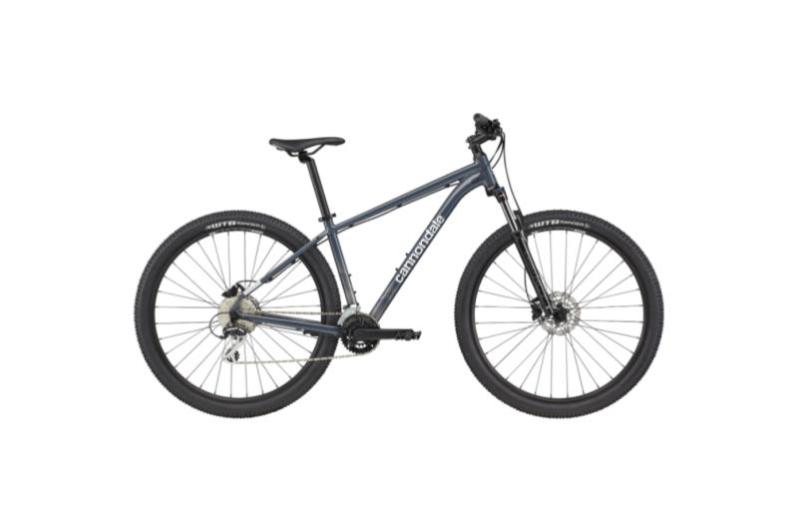
Cross-country bikes are built for speed and pedaling efficiency. They are typically lightweight (25-ish pounds), have a bit less than 5″ of suspension travel, can be either hardtail (front suspension only) or full suspension, and most likely have 29″ wheels. These are best for beginners, though high-end race bikes are used by pros as well.
Trail Bike: Cannondale Habit Carbon 2 Bike
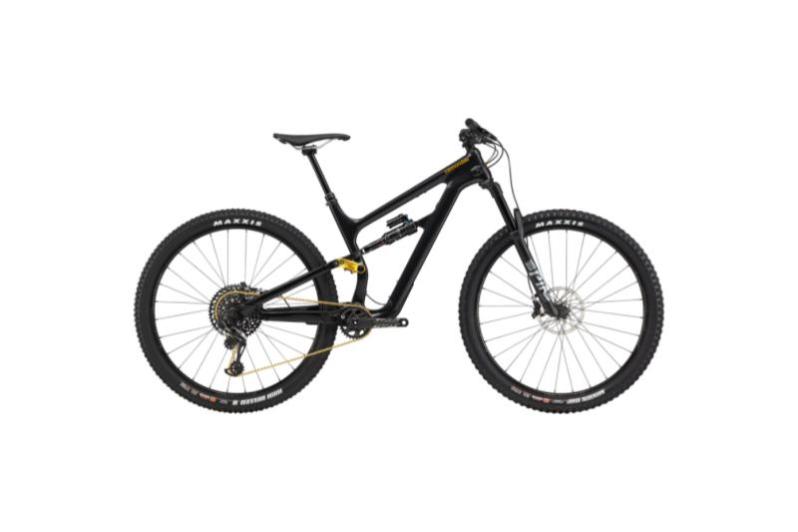
Built to handle somewhat more demanding terrain than cross-country bikes, trail bikes strike a great balance between pedaling efficiency and all-terrain performance. They feature between 5″ and 6″ of suspension travel, 27.5″ or 29″ wheels, and weigh a few more pounds than XC bikes.
All-Mountain / Enduro Bike: Salsa Cassidy Carbon SLX Bike
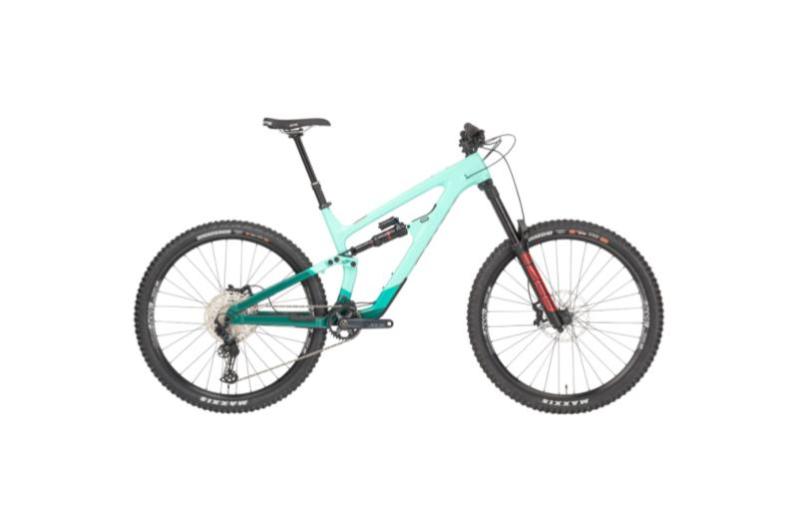
All-mountain and enduro bikes tend to favor all-terrain and downhill performance vs. pedaling efficiency. They can have up to about 7″ of suspension travel, 27.5″ or 29″ wheels, and a longer wheelbase than either trail or XC bikes.
Downhill Bike: Trek Session 9.9 29
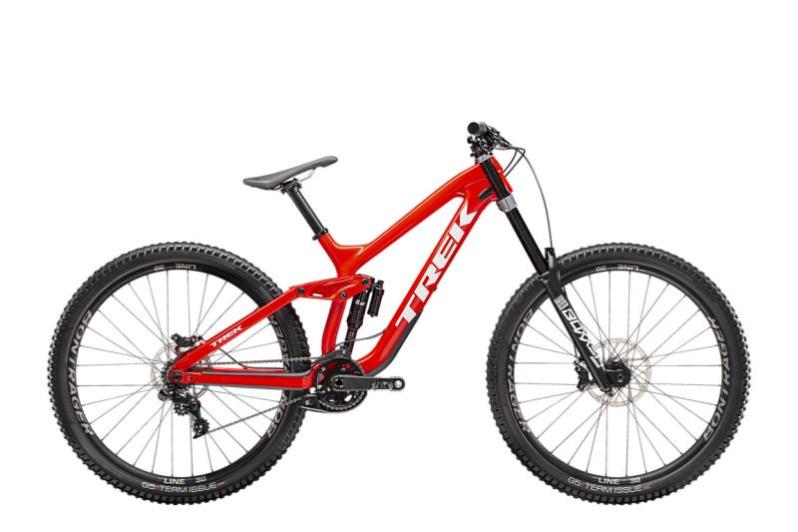
Downhill bikes are the most aggressive of all mountain bikes, meant for downhill performance. 8″ of suspension travel helps smooth out big bumps and drops, while big hydraulic brakes provide plenty of stopping power. Imagine a dirtbike without the engine — that’s kind of like a downhill bike.
What Should I Consider When Riding a Mountain Bike?
Your Control
Mountain biking is very dynamic, with the terrain changing constantly. The bike will want to move around as it reacts to obstacles. Let it. You want to have enough control over the bike where you don’t crash, but not enough where you’re too rigid to react to bumps and changes in direction. Basically, try to stay in a controlled state of looseness, if that makes any sense.
Your Weight
Weight distribution and weight shifting are key to negotiating obstacles on a mountain bike. For example, when going down a steep hill, you’ll want to slide your pelvis off of the back of your seat, shifting your center of balance more over the rear wheel. This helps to keep you from going over the handlebars. Likewise, you’ll have to shift your weight while turning and climbing, too, to find the optimal balance of balance and traction.
Your Speed
Keep your speed and momentum up whenever possible. It can be scary to approach rough sections of trails with speed — but remember, the speed is what will carry you over and past the obstacles. You’re more likely to get stuck, lose your balance, and fall if you try to slowly pick your way through a difficult trail section.
Your Bike
When you’re riding, the bike is an extension of you. Accordingly, it’s important to make sure everything is set properly for your height, weight, and riding style. Learn how to adjust your suspension, make sure your gears shift quickly and accurately and practice with your brakes to learn how to modulate their pressure.
Your Safety
Similar to other forms of outdoor recreation, mountain biking can be dangerous. Make absolutely sure you’re wearing a high-quality bike helmet. It’s usually a good idea to wear gloves, eyewear, and tough clothing as well. Since you might be far from civilization, make sure you’re prepared. Carry a basic bike tool kit, a pump, a spare tube, and extra food & water.
Where Can I Ride a Mountain Bike?
Mountain biking has been steadily gaining in popularity, with state and local governments opening more trails and terrain for bikers. Check out our picks for the best bike trails in the USA. Your skill and comfort level will dictate where you choose to ride. New to the sport? You might want to stick to dirt roads or low-angle trails. Biking for a while already? You might want to check out purpose-built trails that include handbuilt bridges, jumps, and wallrides. You could even choose to visit a mountain resort, where you (and your bike) could board a chairlift to the top of the mountain. From there, let gravity work its magic. As you get more and more into the sport, you might consider visiting a top global mountain bike destination, where you’ll get to experience unique terrain and supportive bike culture.
For every sweaty climb to the top of a hill on your mountain bike, there’s a fun, fast, flowy descent on the other side. This is why mountain biking is so fun — it’s dynamic, athletic, adventurous — a perfect way to get out into nature and enjoy it on your own terms.



